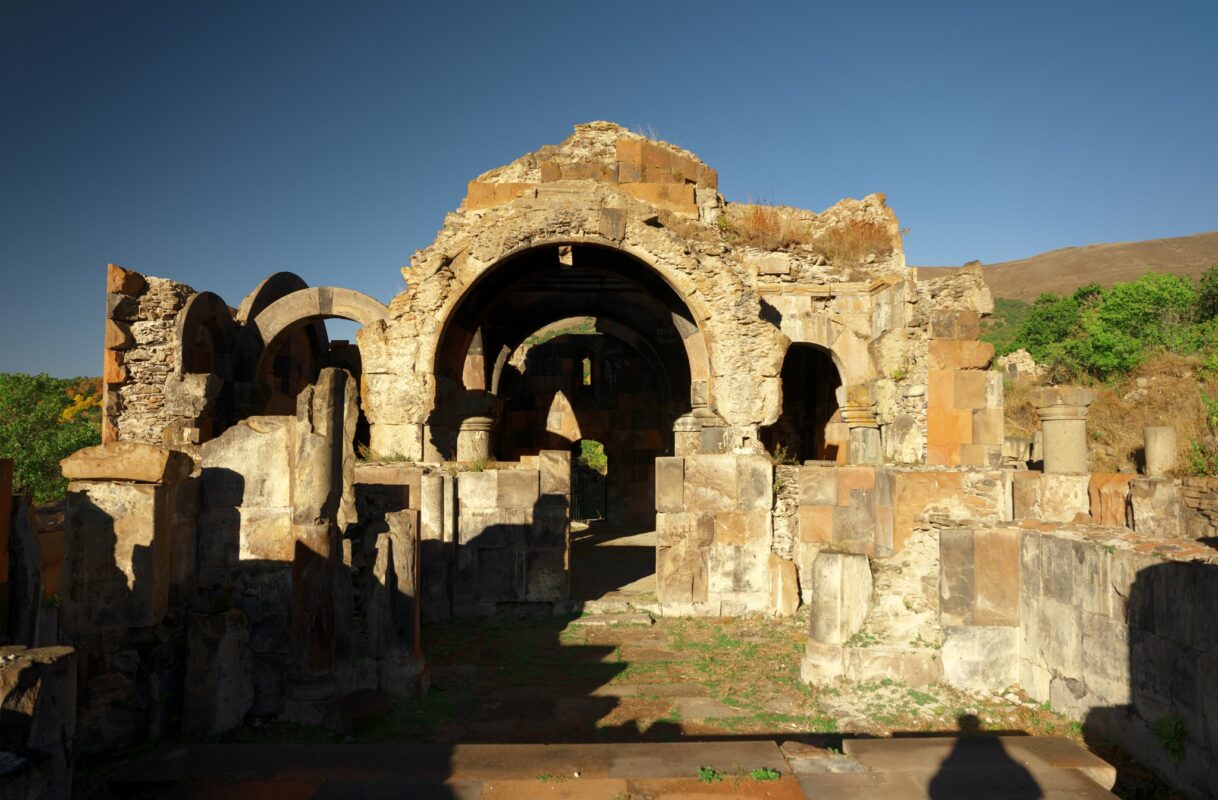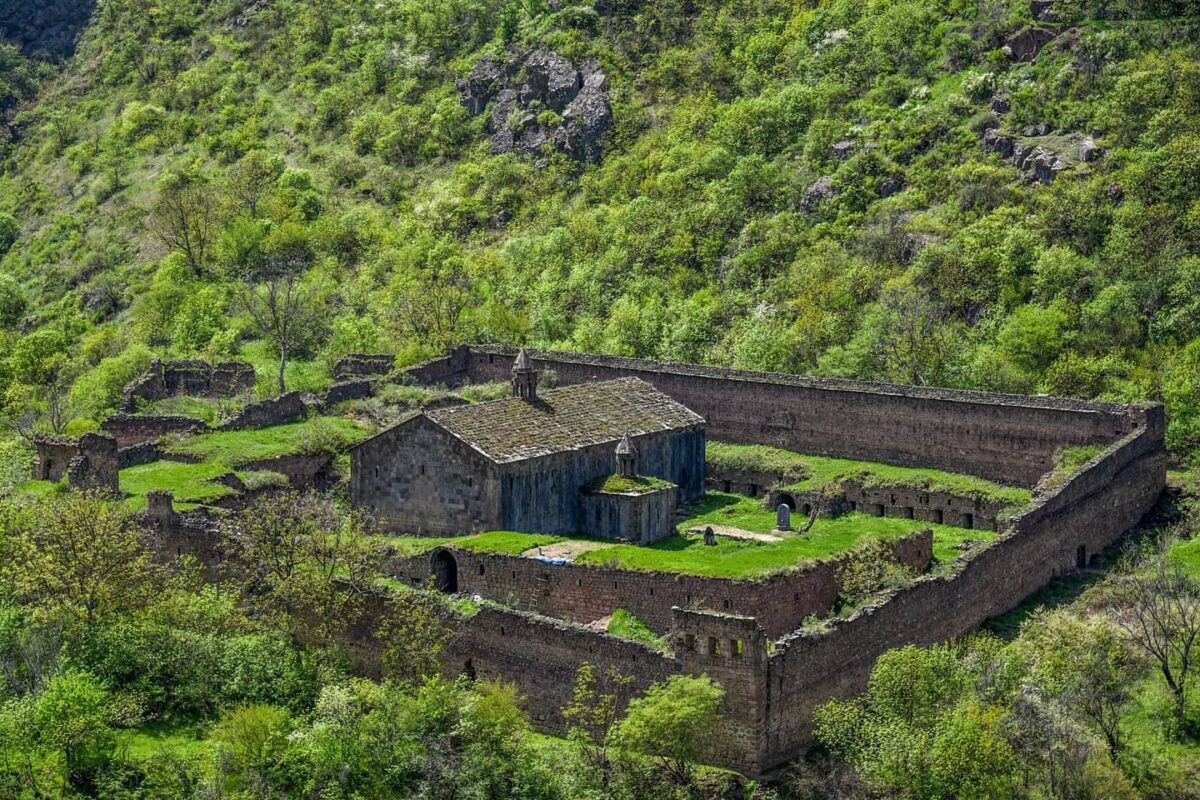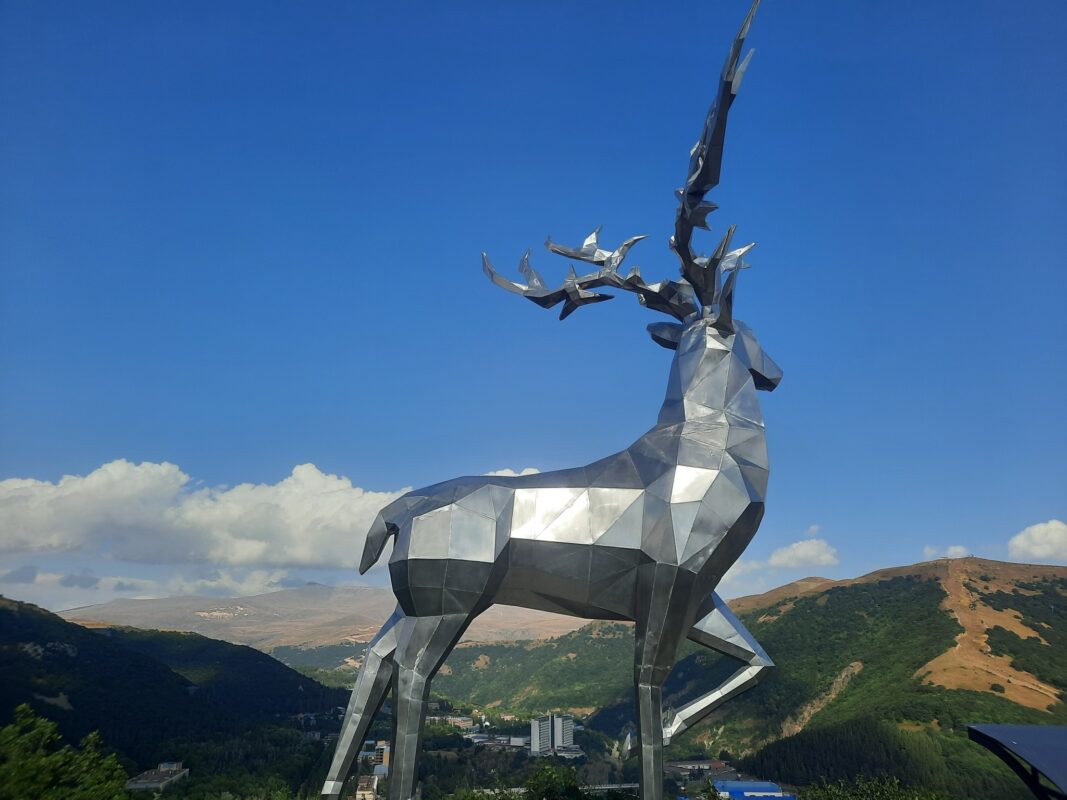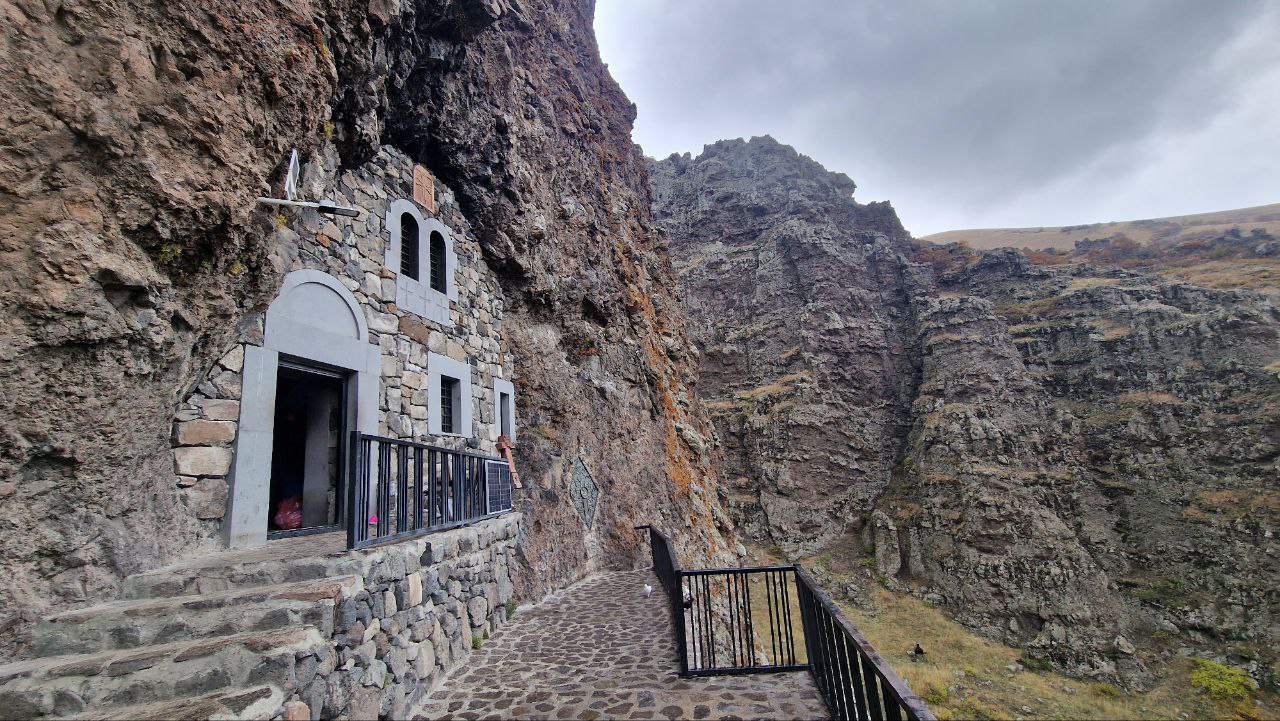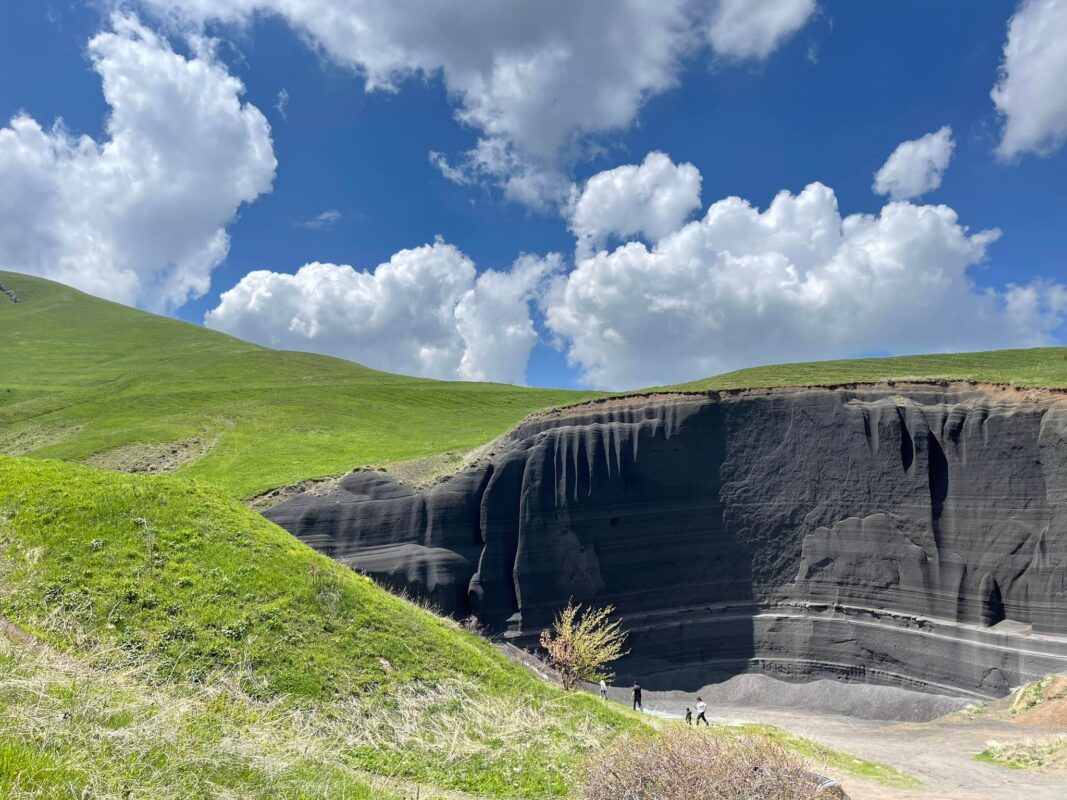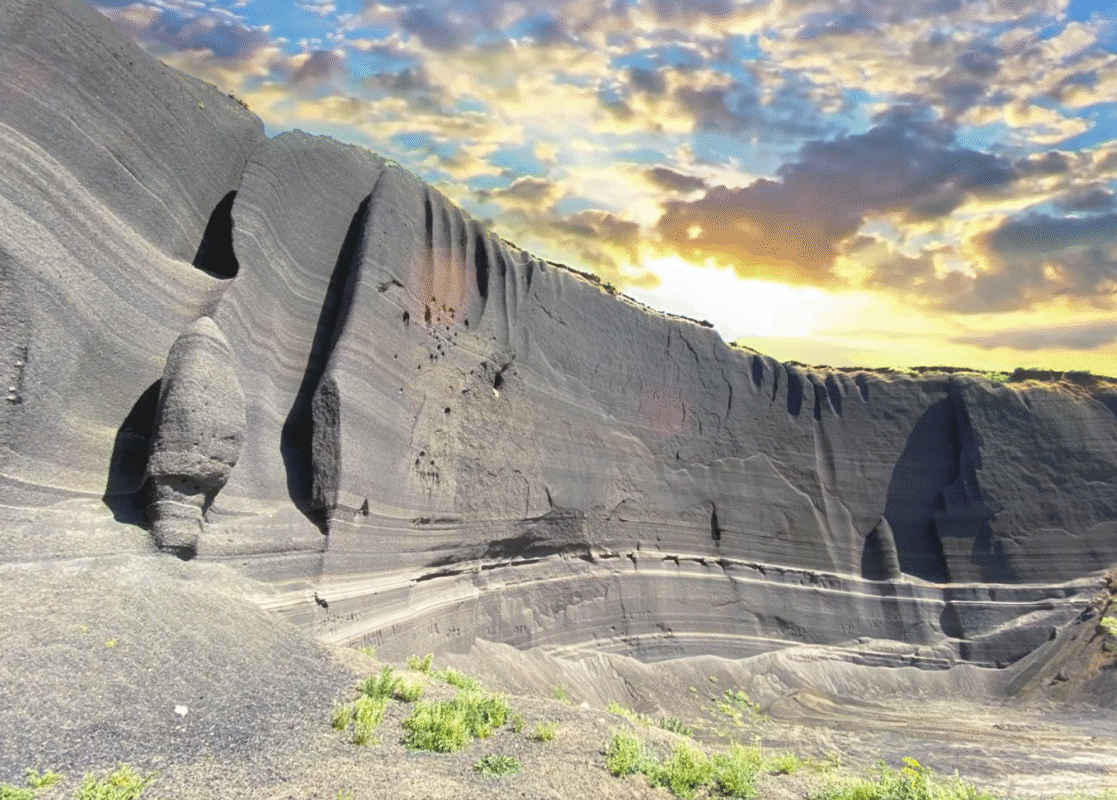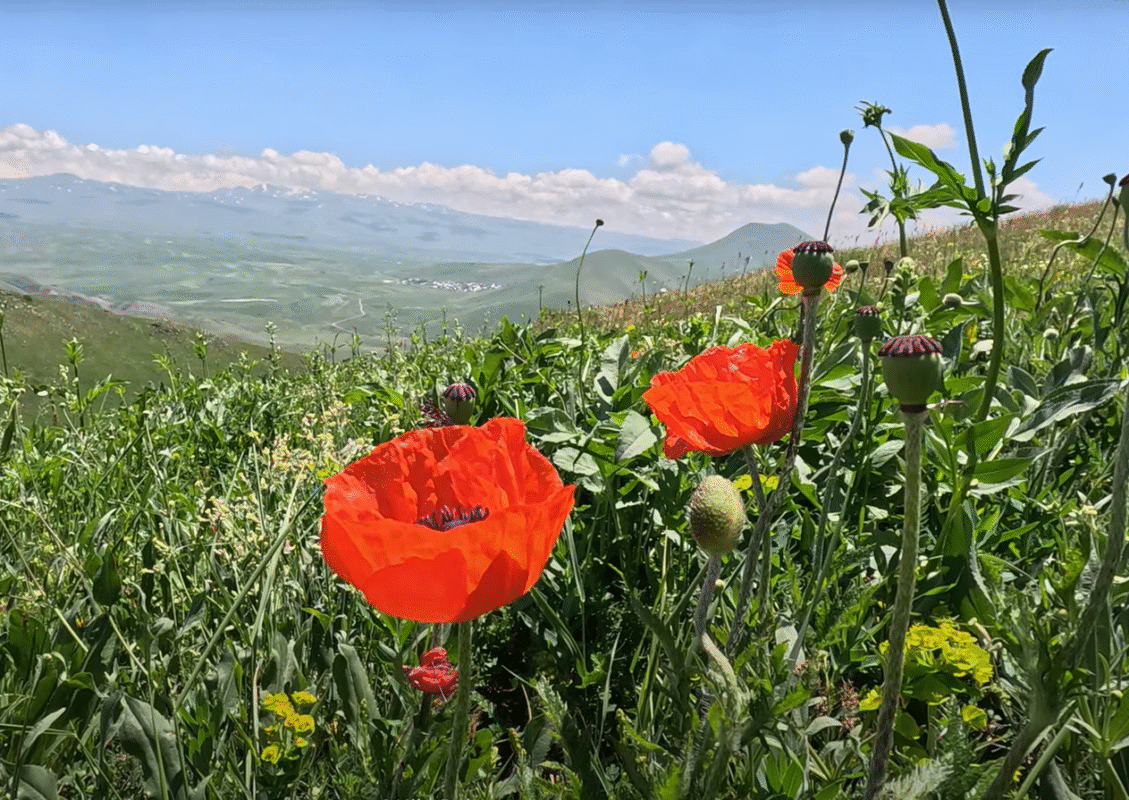Վերջերս ավելացված
Նմանատիպ առաջարկներ
Ձեզ մոտիկ
Gutanasar & the Black Sands
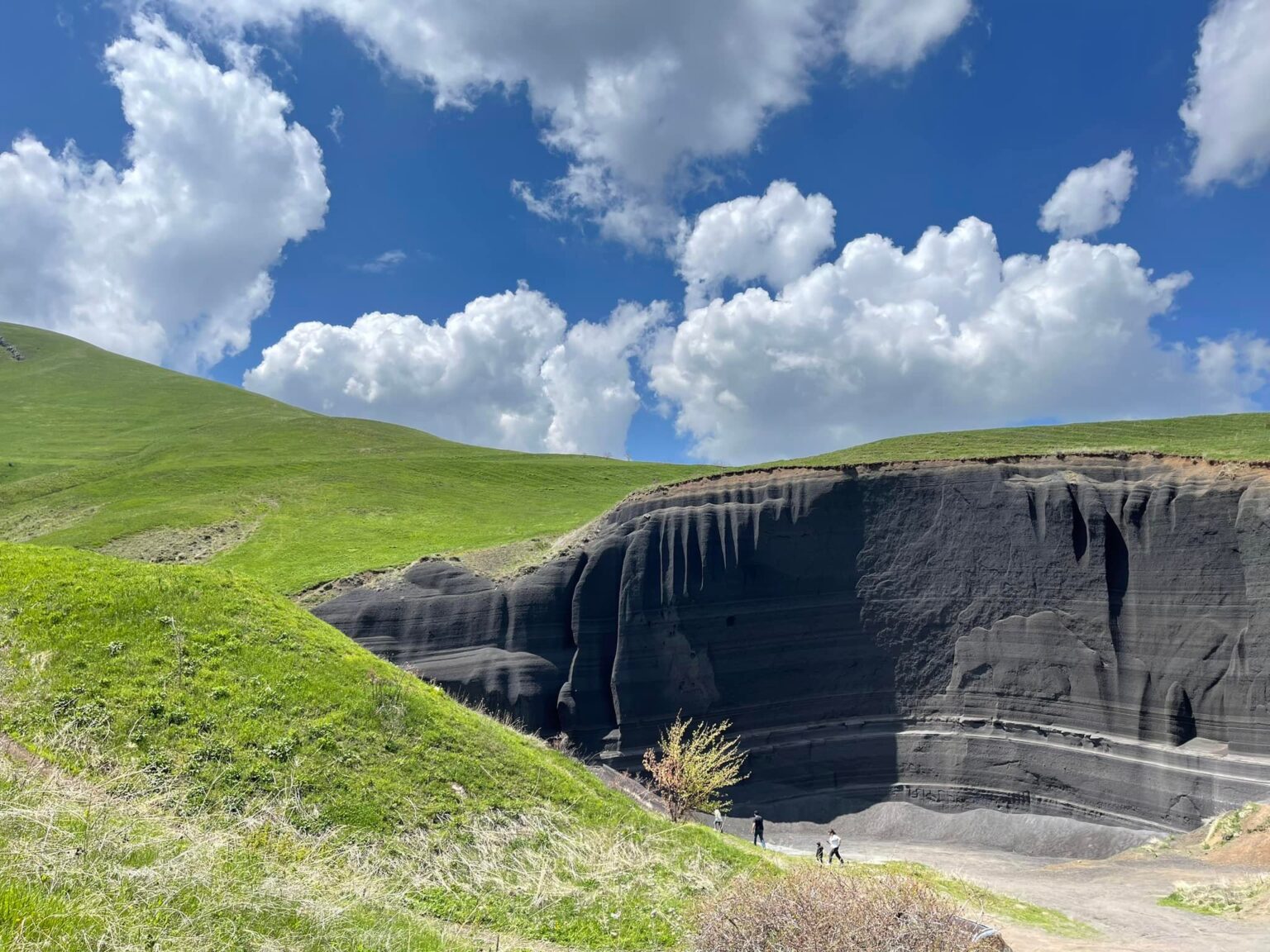
Լեռ
2299 m
Բնական
Միջին
📍 Վայրը - Kotayk Province, 2.5-3 km south of Fantan village and about 4 km northeast of Jraber village.
🕰️ Geological Period - Pliocene epoch. The mountain was formed by ancient volcanic lava and scoria flows.
🌐 Կոորդինատներ - 40.3343° N, 44.6625° E
🌿 Այցելելու լավագույն ժամանակահատվածը - From April to October, during spring and autumn, when the colors are most vivid and the weather is pleasantly warm.
🛤️ Ինչպես հասնել՝ - From Yerevan, drive through the towns of Abovyan and Yeghvard toward Fantan village in Kotayk Province. From the village, a 3 km trail leads to the mountain, accessible either on foot or by off-road vehicle.
ԱԿՆԱՐԿ
Gutanasar is an extinct volcano located in the western section of the Geghama mountain range, distinguished by its perfect cone-shaped form and well-preserved crater. Rising to an elevation of 2,299 meters, it is composed mainly of Pliocene lava and scoria. A distinct fissure on its southern slope marks the ancient direction of lava flow. The mountain’s geological layers contain deposits of perlite and pumice-clear evidence of its volcanic origin.
Nearby lies the “Black Sands” area, a naturally sculpted landscape that has become a striking attraction for visitors. Over thousands of years, volcanic rocks have eroded under the forces of wind and rain, shaping sand-like layers of various colors. As sunlight shifts during the day, the surface reflects different shades-ranging from silver-gray to deep brown and reddish tones-creating an ever-changing color play. This visual effect makes the Black Sands a paradise for photographers and nature lovers alike.
ԱՆՎԱՆ ԾԱԳՈՒՄՆԱԲԱՆՈՒԹՅՈՒՆԸ
According to popular interpretation, the name Gutanasar comes from the Armenian word “gutan” meaning “plow.” Seen from above, the smooth curves of the mountain resemble a traditional plow used to till the land. Another explanation connects the name symbolically to agriculture, as the surrounding area has long been used as pastureland and fertile farmland.
ՊԱՏՄՈՒԹՅՈՒՆ
Gutanasar was formed approximately two to three million years ago. During the Soviet period, geologists studied the area as a potential site for pumice and perlite extraction, but industrial mining was never carried out in order to preserve its natural beauty.
The landscape clearly shows traces of erosion-wind, rain, and soil movement have shaped its layered formations over millennia. The mountain’s colorful bands are caused by the varying mineral composition, including iron, manganese, and oxides that create a natural palette of tones. Archaeological findings such as prehistoric stone tools and household artifacts discovered nearby indicate that the area was inhabited in ancient times. Thus, Gutanasar is not only a site of geological value but also of archaeological significance.
Today, the mountain is recognized as an important destination for eco-and geotourism. It attracts students, researchers, and geology enthusiasts for field studies, while photographers are drawn by the surreal, color-shifting landscape that offers one of the most unique natural sceneries in Armenia.
On its southern slope stands the so-called “Black Wall”-a visible section of the volcanic core that reveals the ancient lava flow and inner rock structure of Gutanasar. This naturally dark basalt wall, formed as the molten lava cooled and solidified, remains one of the most fascinating geological features of the mountain.
ՖԼՈՐԱ և ՖԱՈՒՆԱ
The surroundings of Mount Gutanasar are characterized by mountain-steppe and partly subalpine meadow landscapes. The lower slopes are covered with dry-steppe vegetation such as wild grasses, chamomile, poppy, and thyme, while the higher zones are rich in meadows and medicinal herbs including wild feather grass, savory, apricot weed, and night violet. In spring and early summer, the slopes burst into color as countless wildflowers blanket the terrain, creating a vivid natural spectacle.
The local fauna is typical of the mountain-steppe ecosystem. Hares, foxes, and hedgehogs are common, along with various bird species such as pigeons, falcons, and mountain sparrows. Occasionally, traces of leopard and wildcat have been reported. The area is also home to a wide variety of butterflies and insects, most visible during the spring months when the ecosystem is at its most active.
ԶԲՈՍԱՇՐՋՈՒԹՅՈՒՆ
Gutanasar and its nearby sand formations have in recent years become an attractive destination for nature, eco-, and hiking tourism. The area is ideal for short and medium-length hikes, landscape photography, and nature observation.
Although the Gutanasar hike itself can take a full day, it can also be combined with visits to Neghuts Monastery, Teghenyats Monastery, or St. Thaddeus Church of Arzakan, forming a route that unites Armenia’s natural beauty, cultural heritage, and mountain scenery in one journey.
ՏԵՂԱԿԱՆ ԼԵԳԵՆԴՆԵՐ
There are no well-documented legends about Gutanasar, but in nearby villages of Kotayk Province, local people still tell oral stories and beliefs linking the mountain to ancient times and mysterious natural forces.
According to one such tale, the springs that flow from Gutanasar’s slopes are believed to have healing powers. Locals say the mountain is “alive,” and that after each thunderstorm, a new water source opens inside it. For generations, villagers have drunk only from these springs, believing that the water gives strength and protects against illness.
Հարմարություններ
Մոտակայքում
A medieval monastery in Kotayk Province, near Neghuts village. Built from basalt stone and surrounded by dense forest, the monastery is known for its modest yet harmonious architecture and tranquil mountain views.
An ancient monastery located on the slopes of Mount Teghenis, in an area rich with springs and forested hills. Founded in the Middle Ages, it served as both a spiritual and educational center. The church’s stonework and setting blend beautifully with the surrounding nature.
An early medieval church in the village of Argel, built from local tuff stone. The single-nave church has a simple yet expressive design and has remained intact over the centuries, continuing to serve as the village’s spiritual center.
Dating back to the 13th century, this cross-domed church is built from gray tuff and surrounded by forested mountain slopes. Khachkars (cross-stones) and remnants of ancient structures around it suggest that the monastery was once an important spiritual and communal center.
Natural mineral springs with an average temperature of +32-36°C, rich in beneficial microelements. Located near the village of Arzakan, they are famous for their healing properties and peaceful natural setting, offering visitors a restorative experience in a calm mountain environment.

